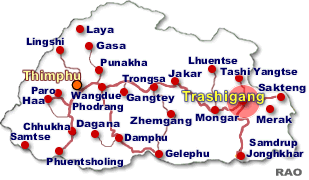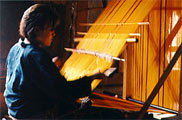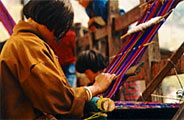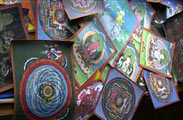 |
Bhutan's
Economy: Textile Industry |
|
|
 |
 |
With
children going to school, Dawa Dema says that finding time to weave together
with home and field work was difficult. "But weaving is an important source
of income for us," she adds. "Even my ancestors used to weave for the Trashigang
dzong in the old days."
Thinley
Pem and two of her sisters devote their entire time to weaving - they weave
throughout the year. |
She claims that weaves from her household are the
best burrey in the geog. Her elder sister Dorji Choezom, 28, won the best
design award in Thimphu during a recent textile exhibition for a Kishuthara
weave.
Dorji
Choezom who started weaving at the age of 13 said that she learnt the art,
like most, by watching "our mother and aunts weave". "They only helped
us on delicate designing," she added. As in the past the raw silk and dyes
are brought from Indian traders in Samdrup Jongkhar the cost of which has
quite naturally escalated over the years. "The raw material is easily available,
the market is good and everyone knows how to weave burrey," says Thinley
Pem who took to weaving seven years ago after dropping out of class x.
Choeden,
70, of Changkhar village in Radhi has woven for more than 50 years but cannot anymore because cataract has
severely affected her eyesight. "The thread used to be nice but now it
is coarse and so is the quality of the gho or kira," she says. Choeden
says that in the past selling a Burrey was difficult. It used to take a
month to sell a burrey gho in Samdrup Jongkhar which was then, the main
outlet, she recalls. "Today it is easier to sell a burrey and there are
more weavers but they weave mostly plain designs without intricate patterns
like we used to in the past." transport.
|







